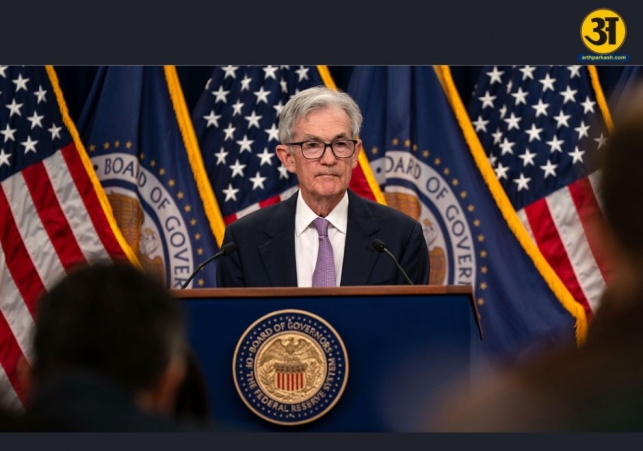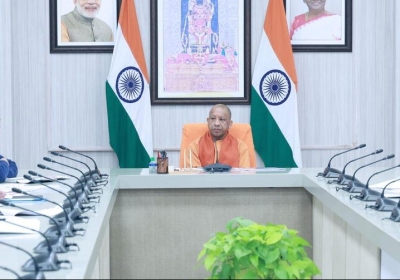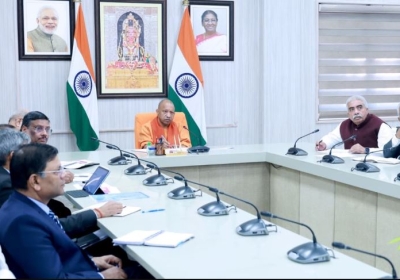
Trump weighs options to replace Fed Chair Powell
Donald Trump considers '3 or 4' names to replace Federal Reserve Chair Jerome Powell
U.S. President Donald Trump has said that he is considering “three or four” people to replace Jerome Powell, the current Chair of the U.S. Federal Reserve. Powell’s term ends in May 2026. Trump criticized Powell for how he is handling the U.S. economy and said he was looking forward to choosing someone else.
Speaking to reporters after attending the NATO summit, Trump said, “I know within three or four people who I’m going to pick.” He also said, “I mean he goes out pretty soon fortunately because I think he’s terrible.”
Trump has often attacked Powell in the past, calling him names and saying he is not smart enough for the job. This time, he called Powell “average mentally” and said he has a “low IQ for what he does.”
These kinds of comments are not common among former presidents. Usually, U.S. presidents do not tell the Federal Reserve what to do. The Fed is an independent institution and is supposed to make its own decisions without political pressure. However, Trump has often spoken out about what he thinks the Fed should be doing—especially about interest rates.
Before Powell’s testimony in front of lawmakers on Tuesday, Trump posted on his Truth Social platform that the Fed should cut interest rates. He said rates should be “at least two to three points lower.” This would mean bringing rates down from the current 4.25 to 4.50 percent range to around 1.25 or even 1 percent.
Powell explains the Fed’s position
Jerome Powell, speaking to U.S. lawmakers, said the Federal Reserve needs to carefully study how Trump’s tariff plans might affect the U.S. economy before making any decisions about rate cuts. He said that a one-time jump in prices, caused by new tariffs or other sudden changes, should not lead to permanent inflation problems. The Fed’s job is to make sure inflation stays under control while also supporting jobs and economic growth.
Powell explained that the Fed is open to cutting interest rates, but only if certain conditions are met. For example, if inflation turns out to be lower than expected or if the job market weakens, the Fed may act sooner. But for now, they want to wait and see what happens.
The Fed has not changed interest rates since December 2024. At that time, the central bank brought the key rate to a level between 4.25 and 4.50 percent. This rate is used to set the cost of borrowing for banks and affects everything from home loans to credit cards.
ALSO READ: Technical glitch halts IndiGo Flight in Chandigarh; passengers deplaned before takeoff
ALSO READ: CCTV surveillance reveals daily chaos on Mohali roads with 1,935 challans issued
Interest rates are one of the main tools the Fed uses to keep inflation under control. When inflation is high, the Fed raises rates to slow down spending. When inflation is low or the economy is weak, the Fed cuts rates to encourage borrowing and investment.
Trump thinks the rates should be much lower to support the economy. He argues that lower interest rates would help businesses, boost jobs, and grow the economy faster. But Powell and the Fed are cautious. They want to make sure that lowering rates too soon doesn’t create new problems, like making inflation worse again.
When asked about Trump’s latest criticism, Powell gave a calm response. He said, “We always do what we think is the right thing to do, and you know, we live with the consequences.” This means the Fed will continue to make decisions based on facts and data, not political pressure.
What happens next
Trump’s comments have started discussions about who could replace Powell if Trump becomes president again and decides not to extend Powell’s term. Powell was first nominated by Trump himself in 2017, but their relationship has become worse over time.
If Trump wins the 2024 presidential election, he would have the power to nominate a new Fed Chair when Powell’s term ends in May 2026. That person would then need to be approved by the U.S. Senate. The choice of Fed Chair is very important because this person helps guide the U.S. economy and influences decisions that affect interest rates, inflation, and jobs.
While it is still too early to say who Trump might choose, it is clear that he wants someone who will follow his ideas about keeping interest rates low.
In the meantime, Powell and the current Federal Reserve team will continue to focus on managing inflation, protecting the job market, and reacting to any new risks like global economic slowdowns or trade problems caused by tariffs.
For now, both the economy and politics are closely linked. Trump’s public comments add more pressure on the Fed. But Powell remains firm in keeping the central bank focused on its duties, not on political opinions.
In conclusion, the coming months will be key in watching how the U.S. economy performs, how the Federal Reserve responds, and what Trump might do if he returns to power.





